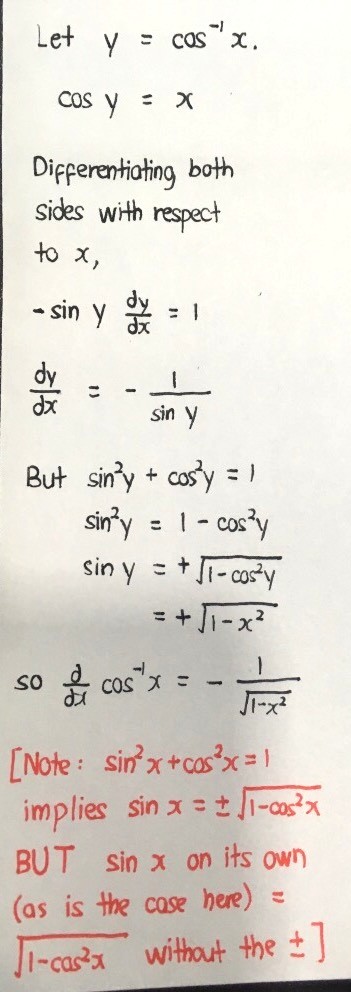Eric Nicholas K's answer to Si En's Junior College 1 H2 Maths Singapore question.
done
1 Upvotes
clear 0 Downvotes
First part
Here the sin y in -1/sin y comes as an “expression”, not an “equation”. Hence, when we express sin y in terms of cos y, there will not be a +- in front of the square root.
Here the sin y in -1/sin y comes as an “expression”, not an “equation”. Hence, when we express sin y in terms of cos y, there will not be a +- in front of the square root.
Date Posted:
5 years ago



when -1 < x < 1, 0 < cos-1(x) < π
sin y = sin(cos-1(x))
Since 0 < cos-1(x) < π,
0 < siny < 1
So sin y is always positive for this range. No ± is needed
Update: if you would like to know why it's restricted, you can check out this link :
https://www.themathpage.com/atrig/inverseTrig.htm#abs